The Fascinating Discovery of Well-Preserved Fossils of Extinct Arthropods: A Window into Ancient Marine Life
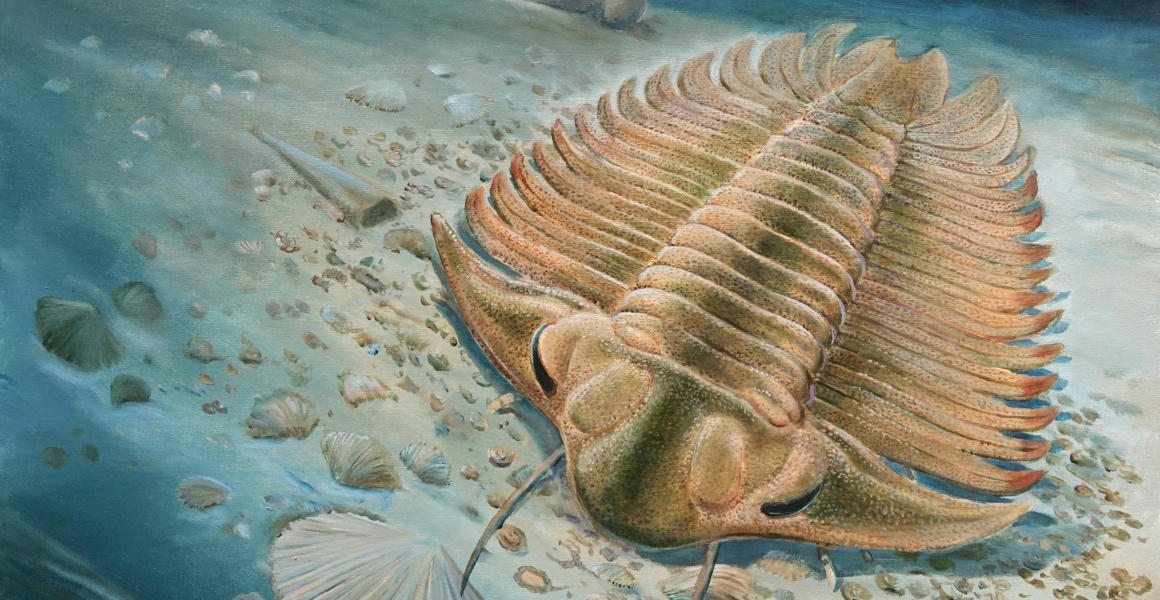
The Fascinating Discovery of Well-Preserved Fossils of Extinct Arthropods: A Window into Ancient Marine Life
Fossils offer a remarkable glimpse into Earth’s distant past, revealing the diversity of life forms that once roamed the planet. Among the most captivating discoveries are those of extinct arthropods, such as sea scorpions (eurypterids), whose fossils provide invaluable insight into ancient marine ecosystems. These creatures, which thrived hundreds of millions of years ago, continue to capture the imagination of scientists and paleontologists alike due to their complexity, size, and the mystery surrounding their eventual extinction. In this discussion, we will explore the significance of well-preserved fossils of arthropods, particularly eurypterids, in understanding the evolution of marine life and the broader implications they have on paleontology.
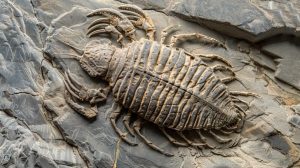
What Are Eurypterids?
Eurypterids, also known as “sea scorpions,” were a diverse group of predatory arthropods that lived during the Paleozoic era, predominantly in the Silurian and Devonian periods, around 500 to 250 million years ago. Despite their name, eurypterids were not true scorpions but were closely related to horseshoe crabs and arachnids. These creatures are among the largest arthropods ever to have lived, with some species growing to lengths of up to 2.5 meters. Eurypterids possessed a segmented body, long tail spine, and large pincers, which were instrumental in capturing prey. They were primarily marine organisms, but some species adapted to brackish waters, and there is evidence suggesting that a few even ventured into freshwater environments.
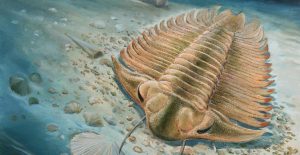
Eurypterids represent a crucial branch in the evolutionary tree of arthropods. Understanding their biology, behavior, and ecological role helps shed light on the development of early marine life and its interaction with the environment. Their fossils allow paleontologists to study the morphology of these ancient creatures, offering clues to their diet, locomotion, and reproductive strategies.
Fossilization: The Key to Understanding the Past
The discovery of well-preserved eurypterid fossils provides a direct link to understanding ancient marine life. Fossilization occurs when an organism’s remains are buried under layers of sediment, where the soft tissues decompose, leaving only the hard parts, such as shells or exoskeletons, behind. Over time, these hard parts may become mineralized, turning into stone. In some cases, the fossilization process preserves even the most intricate details, such as the segmented body and pincers of eurypterids, allowing scientists to study the fine structure of the exoskeleton.
The preservation of eurypterid fossils in sedimentary rocks, especially in shale and limestone, has enabled paleontologists to gain a deeper understanding of these creatures’ anatomy. The fine details observed in fossils, such as the pattern of the exoskeleton, the structure of the pincers, and the segmentation of the body, reveal much about their evolutionary adaptations. Fossils can also preserve traces of soft tissues, such as the gut or eyes, providing further insight into how these creatures functioned within their ecosystem.
The significance of these fossils extends beyond merely understanding the anatomy of extinct creatures. By studying well-preserved fossils, scientists can reconstruct ancient ecosystems, including the environmental conditions that existed millions of years ago. The presence of eurypterids in a particular geological layer, along with associated organisms found in the same strata, offers a snapshot of the marine environment at that time, including factors like water depth, temperature, and the types of prey available. This helps researchers paint a more accurate picture of the Paleozoic seas and the creatures that inhabited them.
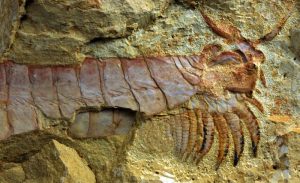
Evolutionary Insights and Marine Life Diversity
The fossils of eurypterids offer valuable clues about the evolutionary trajectory of arthropods and their eventual adaptation to different environments. As one of the earliest forms of large predatory arthropods, eurypterids were important players in their marine ecosystems. By examining their body structure and predatory behavior, scientists can trace the development of specialized adaptations in arthropods. For example, the eurypterid’s powerful pincers were crucial for capturing and subduing prey, a feature that would later evolve in various forms in other arthropods, such as crabs and lobsters.
Eurypterid fossils also provide insights into the broader diversity of marine life during the Paleozoic era. Their existence alongside other ancient marine organisms, such as early fish, trilobites, and brachiopods, helps paleontologists understand how ecosystems were structured and how various species coexisted. Some species of eurypterids are thought to have been ambush predators, lying in wait for smaller creatures to pass by, while others were active hunters, chasing after their prey. By studying these interactions, scientists can make inferences about the food webs and predator-prey dynamics in ancient seas.
Moreover, the extinction of eurypterids is a subject of great interest in paleontology. These creatures once dominated marine ecosystems, but their disappearance toward the end of the Paleozoic era coincided with significant environmental changes, including the rise of more competitive predators and shifts in oceanic conditions. The fossil record of eurypterids provides crucial evidence of the mass extinction events that reshaped life on Earth, offering a lens through which scientists can study how large-scale environmental changes can impact biodiversity.
The Broader Implications for Paleontology
The discovery of well-preserved fossils, such as those of eurypterids, is a reminder of the remarkable diversity of life that once flourished on Earth. Paleontology, as a discipline, continues to uncover new species and ecosystems from the distant past, contributing to our understanding of evolutionary processes and the history of life. Each fossil discovery brings with it the potential for groundbreaking insights, allowing scientists to fill in gaps in the evolutionary tree and understand how life forms adapted to changing environments.
In addition to their scientific value, these fossils also hold cultural significance. The idea of uncovering the remains of ancient creatures from the depths of the Earth sparks the imagination and deepens our connection to the past. Fossils like those of the eurypterids not only enrich our knowledge of ancient marine life but also remind us of the fragile nature of biodiversity and the importance of preserving our planet’ ecosystems
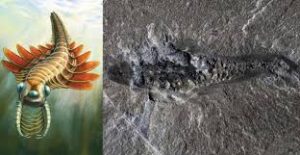
Conclusion
The discovery of well-preserved fossils of extinct arthropods, particularly eurypterids, plays a vital role in expanding our understanding of ancient marine life and evolutionary history. These fossils provide a detailed look into the morphology, behavior, and ecology of creatures that once ruled the seas. As paleontologists continue to explore and analyze these ancient remains, new discoveries will undoubtedly offer further insights into the fascinating world of ancient life on Earth, enriching our knowledge of the past and informing our understanding of the present and future of biodiversity. Through the study of these fossils, we are reminded of the ever-changing nature of life on Earth and the incredible diversity that has existed throughout the planet’s long history.